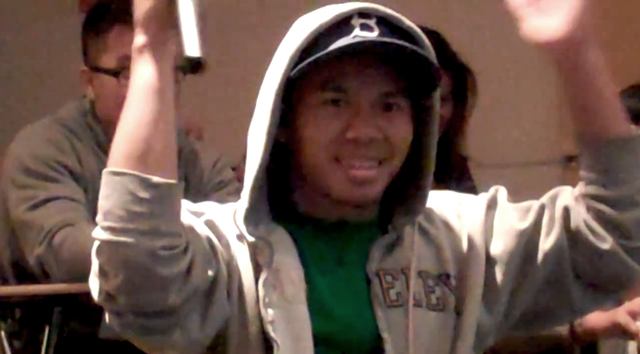In the video below, a student talks about how Generation 1.5 students feel lost between two cultures, not really belonging to either of them. (This is a conversation I’ve had in the past with so many Generation 1.5 students and clearly his classmates agree with him, judging by the finger snapping in the background.)
Many act as translators for their families, especially parents and grandparents. Many are the first in their families to go to college and struggle with balancing the dreams and high expectations of their parents, especially regarding traditional family responsibilities, with work and school. Doesn’t this ring true for native and international students as well?
There is no single way to define a Generation 1.5 student, except that they have the additional challenge of balancing the traditional values of their native cultures, with growing up American, and trying to do what every young person in their late teens and early twenties tries to do – to find themselves and fit in.
In terms of teaching Generation 1.5 students, they face some of the same grammatical challenges as traditional ESL students. This is of course logical since English is not their first language or the language that they use most frequently at home. But Generation 1.5 students also have different needs and require different teaching approaches from both their ESL and native counterparts. One strategy that is helpful is to utilize media to enrich lessons and engage students. This works well because these students have been educated in the U.S. public school system and identify with American culture.
Since this demographic is becoming increasingly common in classrooms, not only in the Bay Area, but across California and the US, all teachers, not only ESL trained teachers, will be working with this large student population. In the Bay Area our richly diverse population is well suited to Generation 1.5 students, because like so many in our communities, they cannot be easily defined.
They are students – hard to define and pin down – who bring new ideas, cultures, and perspectives into class. Who exactly are they? Where are they from? What characteristics do they share? Maybe these questions are missing the point. What’s great about Generation 1.5 is our inability to define the young people who make up this demographic. Maybe instead of trying to define them, we should just be trying to learn from them.
Resources
For KQED’s educator resources, programs and reports about immigrant communities in California, visit www.kqed.org/immigrantvoices
Julia McGurk has a TESOL certificate and an MA in TESOL and has taught in all kinds of ESL classrooms. She has taught English composition to international as well as domestic (mostly gen 1.5) students at CSU East Bay and is working full time as the Career Education Coordinator at The English Center in Oakland, where she teaches career, speaking and listening, computer and Community English classes. She also teaches an advanced reading and composition class at Las Positas Community College in Livermore.
